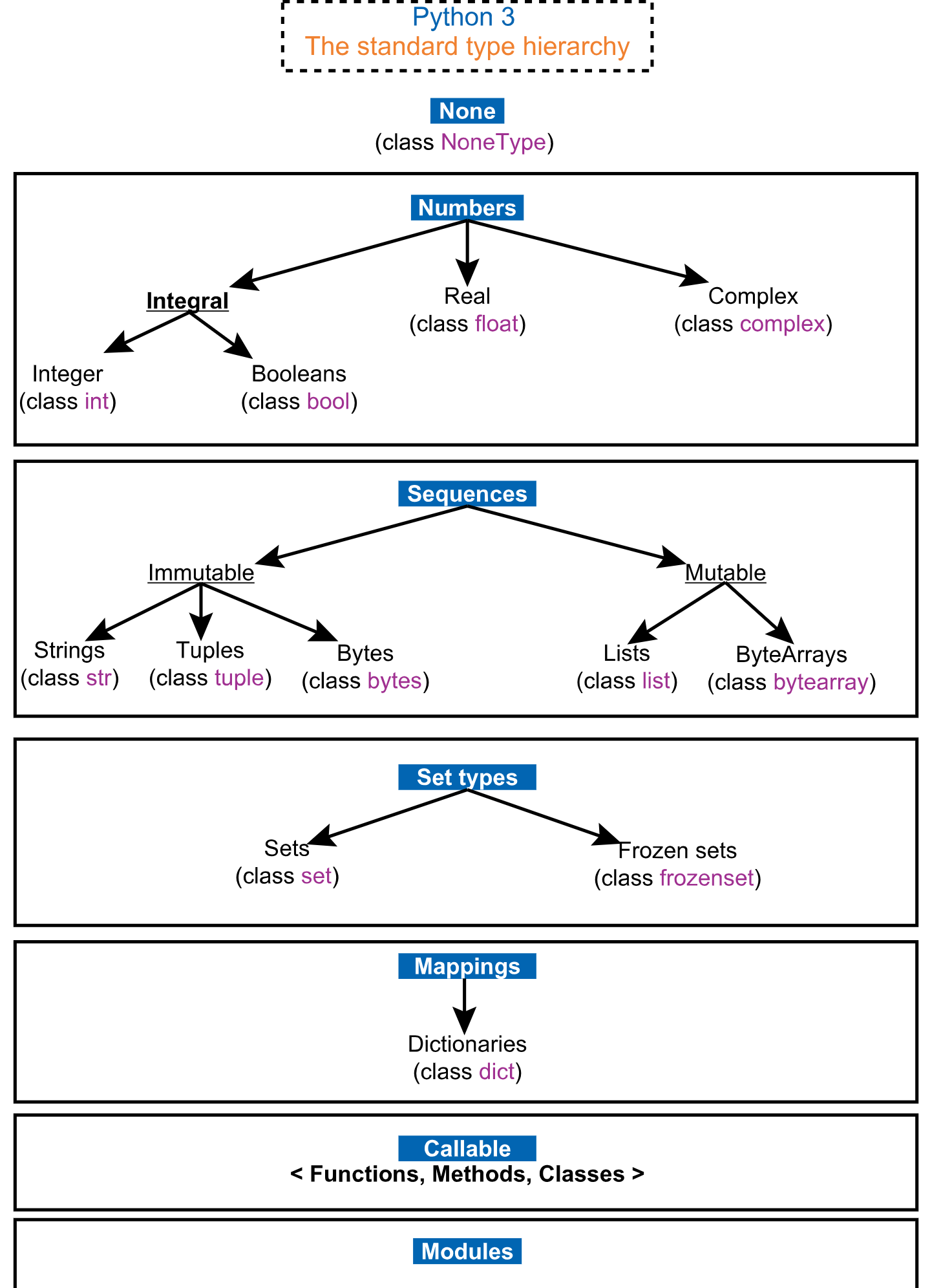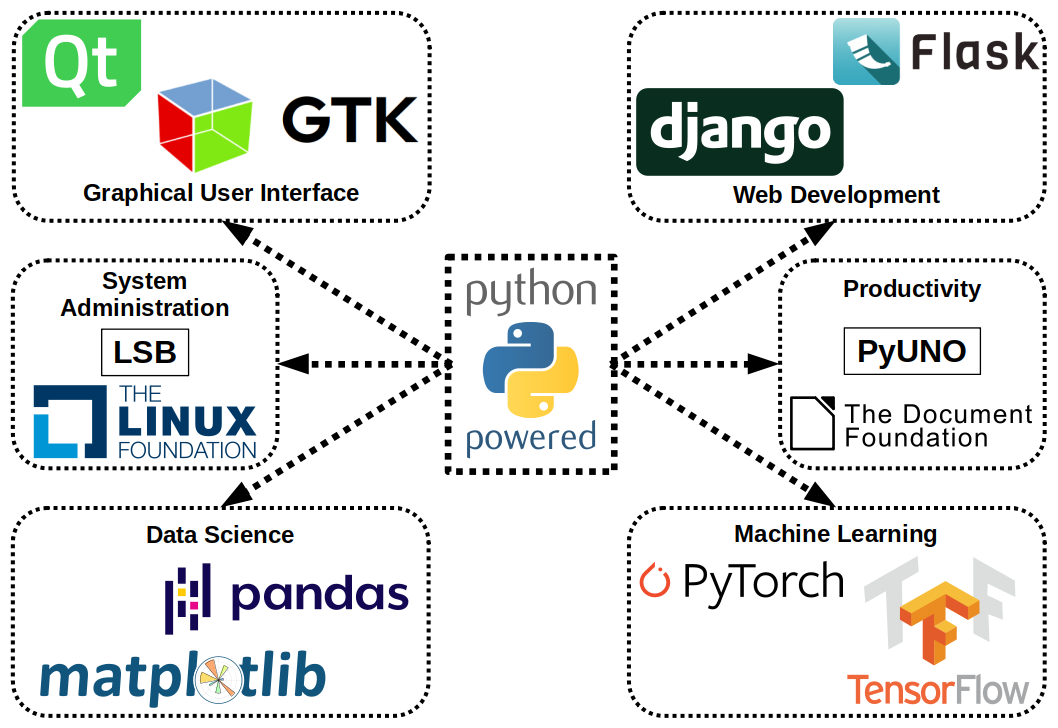Contents:
- Introduction: Exploring the Versatility of Python
- Key Features of Python
- Python in Web Development
- Python for Data Science and Machine Learning
- Python in Automation and Scripting
- Scientific Computing with Python
- Python in Internet of Things (IoT)
- Videos: Roadmap to Master Python
- Conclusion
- Related Content
- References
15 minutes to read (For 180 WPM)
Introduction: Exploring the Versatility of Python
Python, created by Guido van Rossum and first released in 1991, has become one of the most popular programming languages in the world. Its simplicity, readability, and extensive capabilities have made it a go-to language for both beginners and experienced programmers. Python’s philosophy emphasizes code readability and simplicity, which has led to a growing community and a vast ecosystem of libraries and frameworks. This article explores Python’s versatility across various domains, including web development, data science, automation, scientific computing, and the Internet of Things (IoT).
[!NOTE]
Reference and Details: Python Language: Syntax and Examples
Key Features of Python

Python’s popularity can be attributed to several key features:
- Simple and Readable Syntax: Python’s syntax is clean and easy to understand, making it an excellent choice for beginners. The language’s design promotes writing clear and logical code.
- Extensive Standard Library: Python comes with a comprehensive standard library that supports many common programming tasks such as file I/O, system calls, and web development, reducing the need for external libraries.
- Interpreted and Dynamically Typed: Python is an interpreted language, which means code can be executed line by line, making debugging easier. Its dynamic typing allows for more flexibility during development.
- Cross-Platform Compatibility: Python runs on various operating systems, including Windows, macOS, and Linux, ensuring that programs written in Python can be executed on different platforms without modification.
- Strong Community Support: Python has a large and active community that contributes to its development and provides support through forums, tutorials, and extensive documentation.
Python in Web Development
Python is a popular choice for web development due to its powerful frameworks and ease of use.
- Popular Frameworks: Django and Flask are two of the most widely used web frameworks in Python. Django is a high-level framework that encourages rapid development and clean, pragmatic design, while Flask is a micro-framework that offers more flexibility and control.
- Examples of Websites and Applications: Many well-known websites and applications are built using Python, including Instagram, Pinterest, and Spotify. These platforms leverage Python’s scalability and robustness to handle millions of users and vast amounts of data.
- Simplifying Backend Development: Python’s clear syntax and extensive libraries make it easier to develop backend services. The frameworks provide built-in features for database interaction, URL routing, authentication, and more, speeding up the development process.
Python for Data Science and Machine Learning

Python has become the de facto language for data science and machine learning.
- Libraries: Python offers a rich set of libraries for data science and machine learning, including NumPy for numerical computations, Pandas for data manipulation, Matplotlib for data visualization, and Scikit-learn, TensorFlow, and PyTorch for machine learning.
- Data Analysis and Visualization: Python simplifies data analysis and visualization with its powerful libraries. Data scientists can easily load, manipulate, and visualize data to gain insights and make data-driven decisions.
- Machine Learning Applications: Python is widely used for building machine learning models, from simple linear regression to complex deep learning networks. Its libraries and frameworks provide tools for every step of the machine learning pipeline, from preprocessing data to deploying models.
- Case Studies: Companies like Google, Netflix, and Facebook use Python extensively for data science and machine learning tasks. These organizations leverage Python to develop recommendation systems, optimize search algorithms, and analyze user behavior.
Python in Automation and Scripting
Python is an excellent choice for automation and scripting due to its simplicity and flexibility.
- Automating Repetitive Tasks: Python can automate repetitive tasks such as file management, data entry, and report generation. By writing simple scripts, users can save time and reduce the likelihood of errors.
- System Administration: Python is widely used in system administration to write scripts that automate system tasks like managing servers, deploying applications, and monitoring system performance.
- Real-World Scenarios: Examples of Python automation in the real world include web scraping to collect data from websites, automating email responses, and managing cloud infrastructure.
Scientific Computing with Python
Python is a powerful tool for scientific computing and research.
- Libraries: SciPy and SymPy are two key libraries for scientific computing in Python. SciPy builds on NumPy and provides additional functionality for optimization, integration, interpolation, and more. SymPy is used for symbolic mathematics.
- Research and Academia: Python is widely adopted in research and academia due to its ease of use and extensive libraries. Researchers use Python for simulations, data analysis, and developing computational models.
- Scientific Projects: Python has been used in various scientific projects, from modeling climate change to analyzing astronomical data. Its ability to handle large datasets and perform complex computations makes it an invaluable tool in the scientific community.
Python in Internet of Things (IoT)
Python is making significant strides in the field of IoT.
- Microcontrollers: Python can run on microcontrollers through implementations like MicroPython and CircuitPython. These lightweight versions of Python are optimized for microcontrollers and embedded systems, enabling developers to write IoT applications in Python.
- Real-World IoT Projects: Python is used in various IoT projects, such as home automation systems, wearable devices, and industrial IoT applications. Its simplicity and flexibility make it an ideal choice for developing and prototyping IoT solutions.
Videos: Roadmap to Master Python
Explore the top YouTube channels recommended by Python learners and enthusiasts on Reddit. Find insightful tutorials, tips, and resources to enhance your Python programming skills with these trusted channels.
Best YouTube Channels for Learning Python: Expert Recommendations
Conclusion
Python’s versatility and ease of use have made it one of the most popular programming languages across various domains. From web development and data science to automation, scientific computing, and IoT, Python provides the tools and frameworks necessary to tackle a wide range of challenges. As the language continues to evolve and its community grows, Python’s role in the tech industry is likely to expand further. For those looking to get started with Python, numerous resources, tutorials, and communities are available to support learning and development.
Related Content
- NumPy for Data Science: A Comprehensive Guide
- Pandas for Data Science: A Comprehensive Guide
- Pandas Vs. SQL: A Comprehensive Comparison
- PySpark Using Databricks: A Comprehensive Guide
- Pandas Vs. PySpark: A Comprehensive Comparison
- Matplotlib for Data Visualization
- Applied Statistics: An Overview
- Supervised Learning – A Simple Guide
- Unsupervised Learning – A Simple Guide
- Ensemble Learning – Methods
- Feature Engineering - An Overview
- Hyperparameter Optimization
- Recommender Systems
- Deep Learning Fundamentals
- Semi-supervised Learning
- Natural Language Processing
- Computer Vision Fundamentals
- Time Series Analysis
References
- Python Language: Syntax and Examples
- Python Official Website
- Django Official Documentation
- Flask Official Documentation
- NumPy Documentation
- Pandas Documentation
- TensorFlow Documentation
- SciPy Documentation
- MicroPython Documentation
- Automate the Boring Stuff with Python
- Towards Data Science - Python Articles
Whatever the mind of man can conceive and believe, it can achieve.
-Napoleon Hill
Published: 2020-01-03; Updated: 2024-05-01